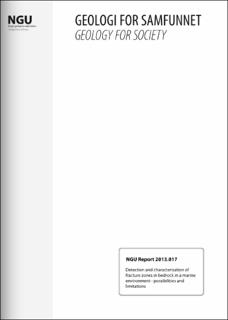| dc.contributor.author | Tassis, Georgios | |
| dc.contributor.author | Dahlin, Torleif | |
| dc.contributor.author | Rønning, Jan S. | |
| dc.contributor.author | Tsourlos, Panagiotis | |
| dc.date.accessioned | 2020-07-15T07:26:19Z | |
| dc.date.available | 2020-07-15T07:26:19Z | |
| dc.date.issued | 2014 | |
| dc.identifier.issn | 0800-3416 | |
| dc.identifier.uri | https://hdl.handle.net/11250/2664415 | |
| dc.description.abstract | In a continuation of the work conducted by F. Reiser et al. (2009) testing the efficiency of Electrical Resistivity Traversing (ERT) land surveys over fracture zones, we have performed a similar study for marine environments and have investigated the possibility of detecting sea-bottom fracture zones. This report summarizes our efforts to establish basic rules to be applied when considering whether or not sea water ERT can satisfactorily detect weak zones inside resistive bedrock which is overlain by sedimentary formations. | |
| dc.language.iso | eng | |
| dc.relation.ispartofseries | NGU-Rapport (2013.017) | |
| dc.rights | Navngivelse 4.0 Internasjonal | |
| dc.rights.uri | http://creativecommons.org/licenses/by/4.0/deed.no | |
| dc.subject | GEOFYSIKK | |
| dc.subject | SPREKKESONE | |
| dc.subject | RESISTIVITET | |
| dc.subject | MODELLERING | |
| dc.subject | BERGGRUNN | |
| dc.title | Detection and characterisation of fracture zones in bedrock in a marine environment - possibilities and limitations | |
| dc.type | Report | |
| dc.description.localcode | 62111 | |
| dc.source.pagenumber | 74 | |
| dc.relation.project | (329500) ForForUT, Forbedrede Forundersøkelser UTbygning | |

